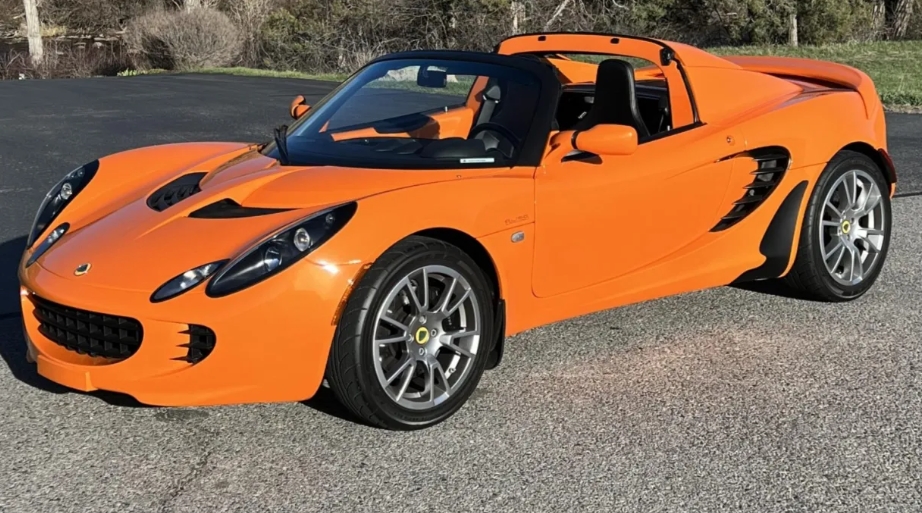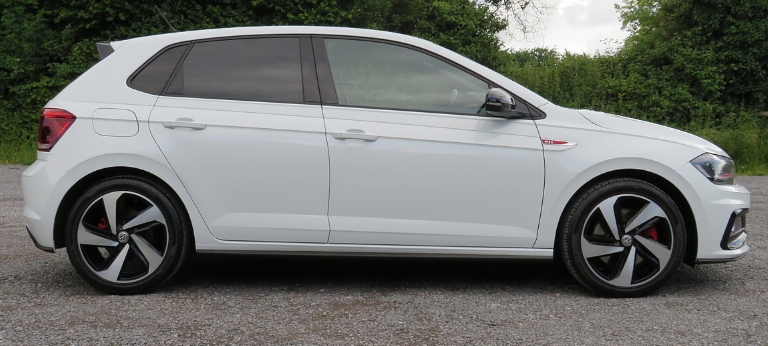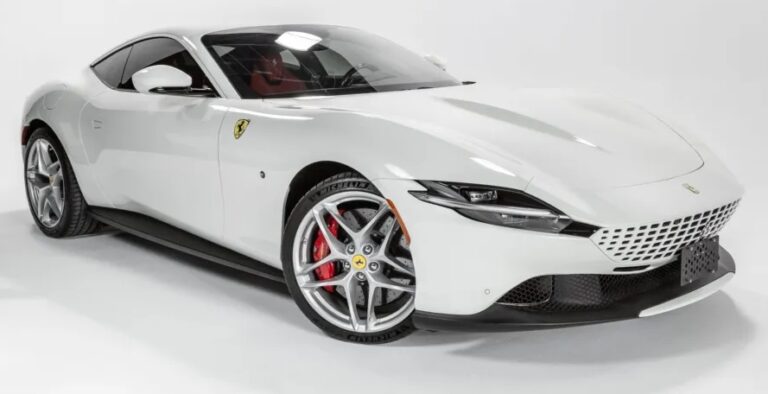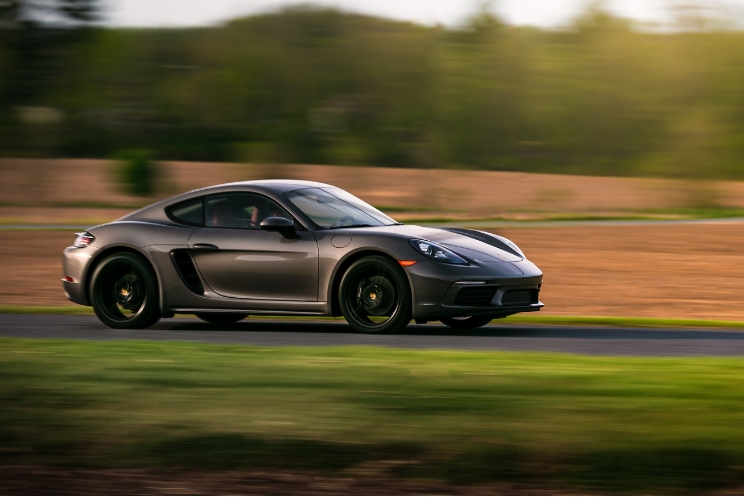Simplify, Then Add Lightness: The 25-Year Evolution of the Lotus Elise
In the annals of automotive history, few cars have so perfectly embodied their creator’s philosophy as the Lotus Elise. It is the physical manifestation of Colin Chapman’s famous edict: “Simplify, then add lightness.” When it burst onto the scene in 1996, it wasn’t just a new car; it was a revolution, a stark and brilliant counterpoint to the increasingly heavy and complex sports cars of the era. For 25 years, through three major series and a dizzying array of variants, the Elise remained a benchmark for purity, handling, and driver engagement. This is the story of its evolution.
The Genesis: Series 1 (1996–2001) – The Revolution Begins
The project, codenamed Type 111, was born from a need to save Lotus. The company was in a precarious financial state, and its next car had to be a world-beater. The genius of the Elise, masterminded by engineer Richard Rackham, lay not in its engine, but in its chassis. It was the first production car to use a chassis constructed from extruded and bonded aluminum sections. This revolutionary technique, using epoxy adhesive cured in an oven, resulted in a tub that weighed a mere 68 kilograms (150 lbs) yet possessed extraordinary torsional rigidity.
Wrapped around this marvel of engineering was a minimalist fiberglass body designed by Julian Thomson. Its friendly, almost organic curves and iconic round headlamps gave it a timeless appeal. The entire car weighed around 725 kg (1,598 lbs), a featherweight by any standard.
Powering the S1 Elise was the 1.8-litre Rover K-Series engine. While not exotic, its all-aluminum construction made it exceptionally light, a perfect match for the car’s philosophy.
Key S1 Models and Variants:
Standard Elise (1996-2001): The original and purest form. The 1.8L K-Series produced 118 bhp. While this sounds modest, the incredible power-to-weight ratio allowed for a 0-60 mph time of just 5.8 seconds. More importantly, its unassisted steering and finely tuned suspension delivered a driving experience of unparalleled feedback and tactility.
Sport 135 (1998-1999): An early factory-tuned model. With a ported cylinder head, new camshafts, and a revised ECU, power was bumped to 135 bhp, sharpening its performance edge.
111S (1999-2001): The “S” stood for “Sprint,” and this model introduced Rover’s Variable Valve Control (VVC) technology. Power rose to 143 bhp, delivered higher in the rev range, giving it a more frantic character. The 111S was distinguished by a rear spoiler, cross-drilled brakes, a close-ratio gearbox, and wider rear tyres.
Sport 160 (2000-2001): A more aggressive, track-focused model. It featured aggressive camshafts, a revised intake and exhaust, and produced around 160 bhp. This version was raw, demanding, and beloved by hardcore enthusiasts.
Sport 190 (Motor Sport Elise): Effectively a race car for the road. With a power output of 190 bhp from a heavily modified K-Series, it was a rare and extreme iteration built for the track day connoisseur.
340R (2000): While not technically an Elise, this radical, doorless, roofless special edition was built on the Elise S1 chassis and powertrain. It was the ultimate expression of the “add lightness” ethos, weighing just 571 kg and serving as a halo car for the brand.
The Refinement: Series 2 (2001–2011) – New Look, New Heart
By the turn of the millennium, new European crash safety regulations necessitated a redesign. This heralded the arrival of the Series 2 Elise. While it retained the groundbreaking S1 chassis, it featured a sharper, more aggressive aesthetic, penned once again by Julian Thomson. The friendly curves were replaced with angular lines and a “ninja star” wheel design, bringing the car’s look into the 21st century. The interior received minor upgrades, though it remained spartan.
The biggest evolution for the S2, however, occurred under the engine cover. Initially launched with the Rover K-Series, the collapse of MG Rover in 2005 forced Lotus to find a new engine partner. They found a perfect match in Toyota. The introduction of Toyota power plants marked a pivotal moment, bringing a new level of reliability and performance to the platform.
Key S2 Models and Variants:
Rover-powered Elise (2001-2004): The initial S2 models continued with the 120 bhp Rover K-Series, with handling refined through new Bilstein dampers and Eibach springs. A Rover-powered 111S (160 bhp) was also offered.
111R / Elise (US Model) (2004-2011): This was the first model to feature Toyota power, specifically the high-revving 1.8L 2ZZ-GE engine sourced from the Celica GT-S. It produced 189 bhp and featured VVTL-i (Variable Valve Timing and Lift-intelligent), which engaged a more aggressive cam profile around 6,200 rpm, delivering a thrilling surge of power to its 8,000 rpm redline. This was also the model that officially brought the Elise to the United States.
Elise S (2006-2010): A new entry-level model using Toyota’s more sedate 1.8L 1ZZ-FE engine, producing 134 bhp. It offered the sublime Elise handling with more accessible and economical performance.
Elise SC (2008-2011): A landmark model. Lotus added a non-intercooled Magnuson supercharger to the 2ZZ-GE engine, boosting power to 217 bhp. The SC was a game-changer, eliminating the “all-or-nothing” nature of the high-revving naturally aspirated engine and providing strong, linear acceleration across the rev range. It could sprint from 0-60 mph in just 4.3 seconds.
California (2007-2011): A special edition for the US market featuring unique styling elements and a more “touring” focused specification, though it was still a raw Elise at heart.
Throughout the S2’s long production run, numerous special editions like the Type 25, Type 72, and Clark Type 25 paid homage to Lotus’s rich Formula 1 heritage, often featuring unique paint schemes and trim.
The Modern Era: Series 3 (2011–2021) – The Final Form
The Series 3 Elise, introduced for the 2011 model year, was more of a comprehensive facelift than a ground-up redesign. The most noticeable change was at the front, with a new single-unit headlight design that brought it in line with the larger Evora, and a revised front clam with a wider “mouth.” The rear also received a new bumper and diffuser treatment.
Under the skin, the engine lineup was once again revised to meet ever-stricter emissions standards, leading to the retirement of the beloved 2ZZ-GE engine. The S3 era became a story of refinement and a gradual escalation of power and aerodynamic focus.
Key S3 Models and Variants:
Elise 1.6 (2011-2021): The new entry point, powered by a 1.6-litre Toyota 1ZR-FAE engine producing 134 bhp. Equipped with Valvematic and Dual VVT-i, it was the most fuel-efficient Elise ever made, yet it retained the agile handling that defined the nameplate.
Elise S / Sport 220 (2011-2021): Replacing the S2 SC, this model used a supercharged 1.8-litre Toyota 2ZR-FE engine, producing 217 bhp. It offered ferocious performance, with Lotus continually refining the package. In 2015, it was rebranded as the Sport 220, signifying its power output in PS.
Elise Cup Models (220, 250, 260): The “Cup” designation signified the most track-focused variants. Starting with the Cup 220, these models added aggressive aerodynamic packages (front splitter, barge boards, large rear wing) that produced significant downforce. The Cup 250 (243 bhp) went further, adding lighter components like a lithium-ion battery and optional carbon fiber parts. The ultra-rare Cup 260 was the zenith, a motorsport-grade special edition with extensive carbon fiber and the most powerful engine tune.
Elise Sprint (2017): This model saw a fanatical return to the core philosophy of “adding lightness.” The Sprint shed 41 kg from the standard car through the use of a lithium battery, carbon race seats, a polycarbonate rear screen, and forged alloy wheels. It was available in both naturally aspirated and supercharged “Sprint 220” forms.
.
THIS could come in handy for your auto garage (and everywhere else!):

.
The Grand Finale: The Final Edition (2021)
In early 2021, Lotus announced the unthinkable: after a quarter of a century, production of the Elise, Exige, and Evora would cease. To celebrate the end of this remarkable era, Lotus created the “Final Edition” range. These were not mere cosmetic packages but the ultimate, most refined versions of the cars.
Elise Sport 240 Final Edition: Replacing the Sport 220, a revised ECU calibration pushed power to 240 bhp. It featured unique badging, new wheel designs, and an array of desirable standard features that were previously optional.
Elise Cup 250 Final Edition: The ultimate Elise. It combined the 243 bhp engine with the most advanced aerodynamics and a suite of lightweight carbon fiber components, representing the pinnacle of the car’s 25-year development.
When the last Lotus Elise rolled off the production line at Hethel in December 2021, it marked the end of an era. Over 25 years and 35,124 units, the Elise had done more than just save its company; it had reminded the automotive world what a sports car should be. It proved that driver engagement, tactile feedback, and a lightweight chassis were more rewarding than headline-grabbing horsepower figures. The Elise was, and remains, a pure, unadulterated driving nirvana—a timeless tribute to the simple genius of adding lightness.







